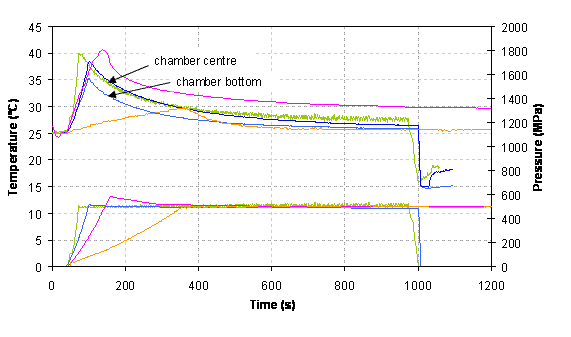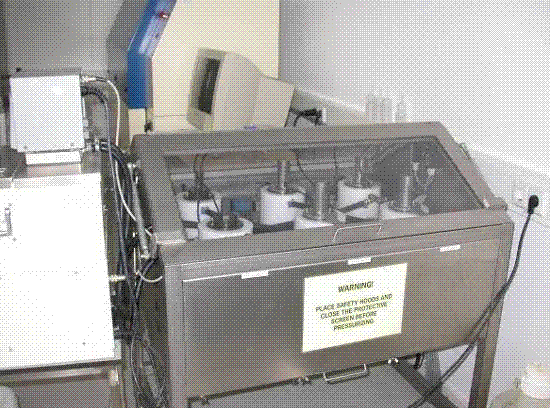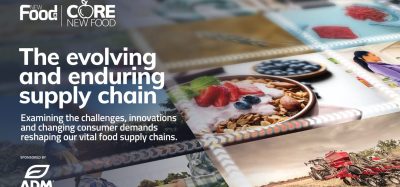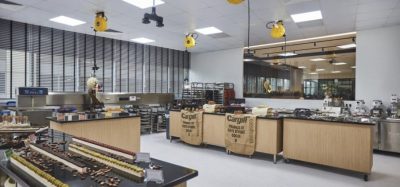Hygienic design of novel processing equipment
- Like
- Digg
- Del
- Tumblr
- VKontakte
- Buffer
- Love This
- Odnoklassniki
- Meneame
- Blogger
- Amazon
- Yahoo Mail
- Gmail
- AOL
- Newsvine
- HackerNews
- Evernote
- MySpace
- Mail.ru
- Viadeo
- Line
- Comments
- Yummly
- SMS
- Viber
- Telegram
- Subscribe
- Skype
- Facebook Messenger
- Kakao
- LiveJournal
- Yammer
- Edgar
- Fintel
- Mix
- Instapaper
- Copy Link
Posted: 4 November 2010 | Edyta Margas & John Holah, Campden BRI and Alexander Milanov & Lilia Ahrné, SIK | No comments yet
The hygienic design of food processing equipment is a critical factor in determining the quality and safety of foods produced. It involves the selection of suitable materials of construction, their fabrication into a functional piece of equipment, the ability of constructed equipment to produce food hygienically and the maintenance of hygienic conditions throughout the equipment’s working life. There is a significant amount of guidance and information available on the principles of hygienic design for traditional food processing equipment (from the European Hygienic Engineering Design Group; www.EHEDG.org), but the nature of NP techniques such as High Pressure Processing (HPP) and Pulsed Electric Field (PEF) may impose other additional stresses on the equipment surfaces, their construction materials and their fabrication.
The hygienic design of food processing equipment is a critical factor in determining the quality and safety of foods produced. It involves the selection of suitable materials of construction, their fabrication into a functional piece of equipment, the ability of constructed equipment to produce food hygienically and the maintenance of hygienic conditions throughout the equipment’s working life. There is a significant amount of guidance and information available on the principles of hygienic design for traditional food processing equipment (from the European Hygienic Engineering Design Group; www.EHEDG.org), but the nature of NP techniques such as High Pressure Processing (HPP) and Pulsed Electric Field (PEF) may impose other additional stresses on the equipment surfaces, their construction materials and their fabrication.
The hygienic design of food processing equipment is a critical factor in determining the quality and safety of foods produced. It involves the selection of suitable materials of construction, their fabrication into a functional piece of equipment, the ability of constructed equipment to produce food hygienically and the maintenance of hygienic conditions throughout the equipment’s working life. There is a significant amount of guidance and information available on the principles of hygienic design for traditional food processing equipment (from the European Hygienic Engineering Design Group; www.EHEDG.org), but the nature of NP techniques such as High Pressure Processing (HPP) and Pulsed Electric Field (PEF) may impose other additional stresses on the equipment surfaces, their construction materials and their fabrication.
Hygienic design is very important for food safety because of its role in ensuring that the equipment does not harbour hazards, e.g. microorganisms, and can be effectively cleaned of material generated during production. For equipment that produces pasteurised/sterilised products, however, the most important function of the hygienic design is providing a barrier to outside microbial re-contamination.
There are three major vectors of microbial contamination: surfaces, liquids and air. Contamination from equipment surfaces can be exacerbated by its process performance e.g. ageing of selected materials during the process and its influence on both organic and microbial cleanability; also temperature, pressure and volume differentials during processing etc. These factors are summarised in Table 1 for HPP and PEF.
| VECTORS | HPP | PEF |
| Air | Water transmitting system | – |
| Liquids | Pressure transmitting fluid | – |
| Surfaces | Chamber
Closure Carriers Lubricants External packaging |
Chamber
Electrodes Insulators Seals and joints |
| Process | Pressure changes
Material changes |
Material changes |
HPP
In a typical HP process, the food product is packaged and sealed prior to processing; therefore, the risks of post process contami – nation are minimal. However, even a packed product may be subjected to microbial spoilage when surrounded by a high level of micro – organisms and if processing affects the integrity of the package. It is important, therefore, to identify and control all the routes of microbial contamination during the HP process and investigate the influence of the process on any microorganism migration through the packaging material.
Air
The water pressure transmitting system is not a closed system but is open to the atmosphere and there is a risk of microbial contamination of the water. The significance of the general risk imposed by air depends on the air handling system design, process, cleaning operations and people. The best way of controlling contamination by airborne micro – organisms in HP processes is to close the system by placing covers on the water tanks.
Water
Commercially available High Pressure equip – ment uses drinking water as a pressure transmitting fluid. Most of the water used during the process is re-circulated and any deficit is made up with fresh water. To avoid build up of microorganisms in the water tank, there is a need for regular cleaning and dis – infection. To ensure that all fluids are drained from the tank, a minimum radius of three millimetres on the tank side to bottom junction and 3° slope on the tank bottom has to be present.
Surfaces
Microbiological sampling of High Pressure equipment, undertaken within the NovelQ project, has shown a high level of microbial contamination. Highest counts are usually associated with the closure sealing arrangement (Table 2).
| Sample | Pilot plant
(Maximum values) 5 rigs |
Commercial plant
(Maximum values) 5 units |
| Pressure transmitting fluid | 5.0 x 105 cfu/ml | 3.0 x 103 cfu/ml |
| Vessel surface | 5.6 x 102 cfu/cm2 | 3.4 x 102 cfu/cm2 |
| Packaging carrier | 8.0 x 101 cfu/cm2 | 2.1 x 100 cfu/cm2 |
| Closure | 2.2 x 105 cfu/cm2 | 2.4 x 105 cfu/cm2 |
| Closure seals | 5.1 x 103 cfu/cm2 | 8.0 x 105 cfu/cm2 |
The major construction material of high pressure processing equipment is stainless steel which, under pressure, is subjected to stresses and deflections and ultimately, material failure due to fatigue and corrosion. The construction of vessels protected by shrink fit layers, autofrettage or wire or strap bindings has been well established to ensure that material changes are controlled and vessels are safe.
Other materials of construction are used in pressure vessels, either as seals or as food packaging containers (Figure 1). Seals usually use a metal-to-metal contact surface arrangement alone, acting as both an initial and a final seal, or in combination with softer deformable elastomeric materials. Any elastomeric material in sealing arrangements will be subjected to material changes due to pressure cycling and will have a limited life prior to replacement during routine maintenance. The impact of such material pressure changes on microbial retention is not known, though high levels of microorganisms can be associated with the seal arrangements. This may, of course, be due to poor cleaning. Carriers which are constructed of materials such as polypropylene are also subjected to pressure changes.
Lubricants are often used around the closures to prolong seal efficacy. A high number of microorganisms may be found in lubricants and on the machine parts covered by them. Lubricants do not come into direct contact with product; however, they do come into contact with packaging materials. Use of lubricants should be restricted within the High Pressure equipment or antimicrobial lubricants should be used.


Figure 1 High Pressure commercial Unit (Wave 6000_300 HC Hyperbaric) showing packaging carriers Copyright: NC Hyperbaric
Process
Surface imperfections, crevices and micro cracking may arise through the introduction of continued high pressures. Microorganisms trapped in such crevices and protected with soil may be very difficult to remove. Studies conducted by Campden BRI have shown that microorganisms attached to smooth surfaces, and surfaces with crevices, have a similar resistance to High Pressure (Figure 2). Therefore, there is minimal risk that ageing of the materials can enhance surface contamination levels due to better survival of microorganisms.


Figure 2 Effect of high hydrostatic pressure on P. aeruginosa and L. innocua in new and artificially worn surface adhered niches
Pressure and temperature differentials may favour microbial migration through the packaging, especially during the de – pressurisation process. However, initial studies conducted by Campden BRI with polyethylene pouches do not indicate increased migration caused by HP processing, although further work with different packaging materials must be carried out.
Generally, the microorganism level on food processing equipment can be controlled by better hygienic design, appropriate cleaning and disinfection systems and personnel hygiene. Unfortunately, standard hygienic design rules which may be applied to typical food processing equipment very often cannot be applied to High Pressure equipment. The main challenge of HP equipment is to withstand the applied pressure. Even if the chamber’s closure had more hygienically designed seals with no crevices present, the high pressure transmitting fluid would be forced into them. The only way to minimise HP equipment contamination of those areas is to have dismountable parts which can be cleaned manually.
To establish and harmonise best hygiene practice for High Pressure Processing, Campden BRI in conjunction with other NovelQ partners is planning to produce a guidance document on Good Manufacturing Practice (GMP) for High Pressure Processed (HPP) Foods. This will be published in 2011 and will include sections on packaging handling before and after the process, suitable packaging materials, QC checks, cleaning and disinfection of HP equipment, personnel hygiene etc.
PEF
Surfaces
A possible application of Pulsed Electric Field is to preserve liquid foods. The food product comes into direct contact with the surfaces of PEF equipment and there are many established materials (Table 3) which have been chosen by PEF equipment manufacturers primarily based on their ease of manufacturing.
| Surfaces | Material |
| Electrodes | Boron carbide (B4C)
Stainless steel Titanium |
| Insulators | Epoxy resins
Ceramics PEEK (Polyetheretherketone) PTFE or PTFE enclosed in a hard PVDF body Delrin (POM) Polypropylene Ultem |
| Seals and joints | Silicon rubber
Silicon glue |
Process
The ageing of polymer insulators, such as Epoxy resin and PEEK, usually occurs and can be accelerated by different types of environmental stress factors. The factors that are most likely to cause stress in insulators used in the food industry are humidity, temperature variation and mechanical stress. Electrical degradation which causes ageing often involves mechanisms such as treeing, partial discharges and dielectric heating.
Treeing can occur in the form of water treeing and electrical treeing. Water treeing arises when a material absorbs moisture under the influence of an asymmetric alternating electric field. This causes the formation of water-filled tubules that grow in a tree-like way. In electrical treeing, a similar tree-like structure is formed, but in this case, it is of gas-filled tubules. Electrical treeing is caused by localised partial discharges.
A partial discharge can be described as a localised dielectric breakdown of the insulation material which happens when the material is under high voltage stress.
Electrical currents may cause internal heating (dielectric heating) of the insulator material when discharges occur in voids in the material, this may in time cause a thermal breakdown.
SIK studied biofilms of Pseudomonas fluorescens on new and aged surfaces subjected to PEF treatment. The results indicated that there was better survival of microorganisms attached to the surfaces with crevices after PEF treatment. It can be concluded from these initial studies that there is a concern that microorganisms can survive PEF treatments, when adhered to surfaces or when in cracks, which could then re-contaminate the treated product. This work therefore needs to continue to establish appropriate controls.
References
Auckland, D.W. and B.R. Varlow. 1995. Electrical treeing in solid polymeric insulation. Engineering Science and Education Journal. Vol. 4(1):11-16
Fryer, D.M. and J.F. Harvey. 1998. High Pressure Vessels. Chapman & Hall. London ISBN 0412074516
Hauser G., G.J. Curiel, H.–W. Bellin, H. J. Cnossen, J. Hofmann, J. Kastelein, E. Partington, Y. Peltier, A. W. Timperley. 2004. EHEDG Document 8. Hygienic equipment design criteria second edition, April 2004. Campden & Chorleywood Food Research Association, Chipping Campden, Gloucestershire GL55 6LD
Holah J. 1999. Guideline No. 20. Effective Microbiological sampling of Food Processing Environments. Campden & Chorleywood Food Research Association, Chipping Campden, Gloucestershire GL55 6LD
Holah J. 2003. Guideline No. 39. Guidelines for the Hygienic Design, Construction and Layout of Food Processing Factories. Campden & Chorleywood Food Research Association, Chipping Campden, Gloucestershire GL55 6LD
Pugh, H. L, D. 1970. Mechanical Behaviour of Materials Under Pressure. Elsevier Materials Science Series. Elsevier Publishing Company Limited, London
<http://en.wikipedia.org/wiki/Partial_discharge>, 2006-08-28
<http://www.istanbul.edu.tr/eng/ee/jeee/main/pages/issues/is11/1101 2.pdf>, 2006-08-20
About the Authors
Edyta Margas
Edyta Margas is a Research Officer in the Food Hygiene Department at Campden BRI. Edyta has an engineering degree in Food Quality and Management and a Masters degree in Food Technology and Nutrition from the Wroclaw University of Environmental and Life Science in Poland. After graduating, she started work at Campden BRI and has worked there for over four years. Edyta has just started a PhD course in Food Microbiology at the University of Nottingham. Edyta is responsible for managing the day to day activities of a number of projects, which has involved both laboratory based research work, factory studies in a number of countries in Europe and the USA, and presentations at internal Campden and international meetings. She is responsible for contamination control in dry food processing environments and her PhD project is focused on Salmonella management in low aw food products and their environments.
Alexander Milanov
Alexander Milanov earned his MSc in chemical engineering and food technology from Lund University. He has been Project Manager at SIK – the Swedish Institute for Food and Biotechnology since 2004. His research and industrial projects focus on hygiene, microbial risk assessment and risk management. Prior to joining SIK, Alexander gained years of experience of quality management and hygiene from several positions within the Swedish meat industry.
John Holah
Dr. John Holah is an applied micro biologist and Head of the Food Hygiene Department at Campden BRI working both in food factories and in the laboratory. He has a wide knowledge of the food industry and conducts troubleshooting audits for food factories and catering establishments all over the world investigating microbial and foreign body contamination incidents and problem solving. His Department has expertise on the hygienic design of food factories, production layout, and food processing equipment; aerobiology and factory air handling systems; factory services and water systems; cleaning and disinfection; personnel hygiene and environmental sampling.
Lilia Ahrné
Dr. Lilia Ahrné is director of the department for Process and Technology Development at SIK – The Swedish Institute for Food and Biotechnology and Associated Professor in food engineering at Chalmers Technical University. Before joining SIK she worked for Tetra Pak Processing Systems. Her research interests are to understand the effect of processing on physical, chemical and structural characteristics of foods, and use this knowledge to develop new processes and products taking in account sustainability aspects as energy consumption and costs. Processes under study include both traditional and novel technologies. She has extensive experience in coordination of industrial and European research projects.









